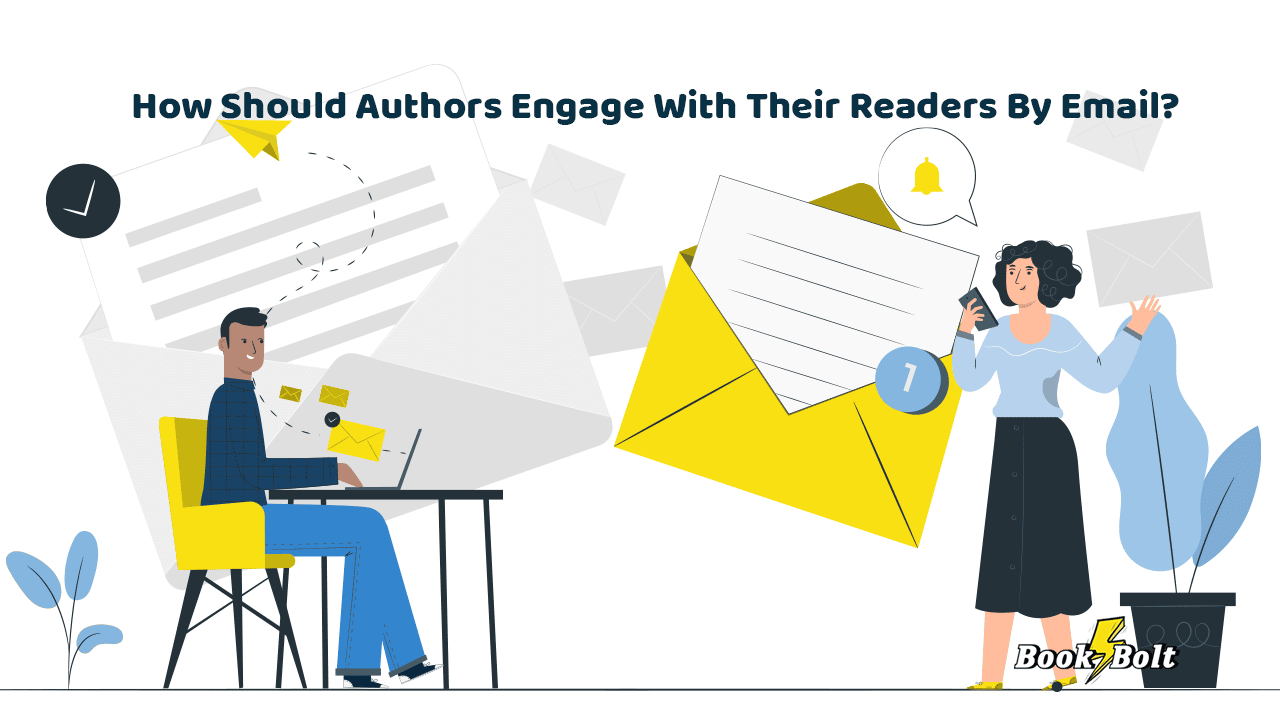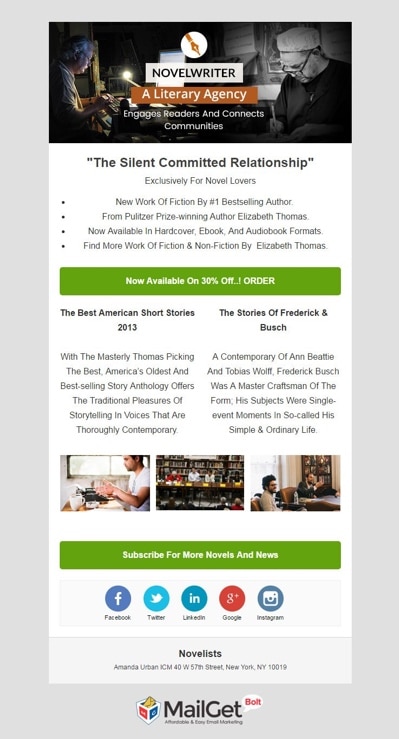
Keeping in touch with your customers is important in any industry, repeat sales being the lifeblood of many creative endeavors. When it comes to authors, since their work emotionally touches so many so deeply, keeping in contact with readers is an extremely important thing. But what is the best way for an author to do this via Email? What level of contact do their readers expect? How much is too much? We hope to resolve some of those concepts for you.
Templates
One way to do this is through the use of templates. Email templates, often known as prefabricated responses, allow you to store a response; you may open an existing template and merely fill in relevant information, eliminating the need to retype common emails. But why are Email templates beneficial to you? These templates might help you respond to emails more quickly and easily. Because you properly edited the email the first time, they also help your reply to be typo-free, with appropriate grammar and punctuation. Finally, they assist you in maintaining a consistent and professional voice while answering in email, even if you are not exactly at your best if you chose to reply.


When is it best to use such templates? Email templates can be used for formulaic responses or requests such as: answers to frequently requested questions, when you’ve asked a beta reader to read your work, when you are requesting that a book critic review your latest offerings, sending your final drafted copy to your editor, or if you wish to communicate that you open to being interviewed on literary blogs and forums of that nature. There are also times when you would not which to use this method, such as when you are dealing with situations that would not properly fit into this type of format, quick responses that would just be easier to type, or when sending out personal or sensitive information. Things you do not want the world to have access to should never be a part of any of your Email templates at all.
Free Chapters
Offering a free chapter to the world will absolutely help you promote your book. Handing out a digital free sample chapter from your most recent book can assist enhance book sales, and automation allows you to market your free sample to potential subscribers on a continuous basis. You can even put up a condition that will automatically contact folks who you have sales info on who did not purchase your work immediately. If they showed interest in the past, this might be the very thing to help win them over.
Free/Premium Newsletters
You can also create a premium or free newsletter. Recurring money from a paid newsletter might help you balance your earnings between book launches. Your paid newsletter could take many different forms, such as conducting Q&A sessions about your previous books, organizing a book club, or offering exclusive information. Make a landing page to test interest in a paid newsletter before committing, and then tag subscribers to be notified once it’s online. Use email automation to pitch your paid newsletter if you already have one. Alternatively, provide your newsletter for free to the broader public to build new interest because your potential readers have nothing to lose. When you combine this with the promise of a free chapter, you could have something.
Another way you can do it is to use a link trigger or form to gauge interest. Running a paid newsletter needs continual work, so be sure it’s worthwhile. You may determine how many prospective paid subscribers you have by asking users to sign up for updates via a link trigger or form. At this point, you can create a pitch email that should inform subscribers about the material they can expect, the cost, and how to sign up. Following a purchase, you can pitch new and existing work to subscribers or maybe even offer exclusives “for members only”. Existing customers are more likely to be interested in exclusive material than new subscribers. As a result, you can set up automations to pitch customers only after they have purchased from you.
Real World Example: Stacey Upton Bracey
A fine example of a writer’s newsletter blog is the one done by author Stacey Upton Bracey. She is the author of the “Darkwood” fantasy series. Set in a fictionalized medieval Germany where men can change to wolves, her story crafts a universe where there is still magic in the air. Dark Fantasy/Historical Fantasy/Adventure/Romance with a hint of twisted fairytale. On her main site she promotes her books, plays, and non-fiction work, but also details her life and travels to show her fans the other side of how she lives.
For example, in one blog she details how much she enjoys traveling to and experiencing life in Africa and the Mediterranean. This small insight links her in new, more personal ways to her reader base. This approach might just be mildly interesting to some, but it could also make finding out more about her and her work even more appealing to others. To quote her blog:
“As a lifelong swimmer, I’ve spent a fair amount of time swimming in open water, particularly when we lived in Southern California. That water was cold, but it was fun once you got used to it. When we moved to the Blue Ridge Mountains of Tennessee, I did lake swims in some of the prettiest lakes I’ve ever seen. That water was also cold, but fun when you got used to it. Since living in Texas, I’ve not swum in open water. There are big alligators in the water here, not to mention water moccasins, a nasty, vicious sort of snake. It’s the one creature that truly terrifies me.
(Photo credit: eatwriteplay.com)
So, I trained for this trip by doing lots of laps in indoor pools. I was mostly confident that I’d be able to swim 2-4 miles a day. My friends who’d been on these trips before assured me that no one cares if you decide you’ve had enough and want to get back on the boat. As the swim trek guide said, “this isn’t boot camp.” The guides did a great job of finding water that was smooth, too. One day we had some pretty good rolling waves that I found rather fun, as I like waves. We were told they were swells that had come from Africa. It felt quite exotic, but then I realized Africa wasn’t all that far.”
This interesting view into the real-life world of the fantasy writer says just enough to humanize her in the eyes of her readers but also it works to create common ground with them. And if they feel more comfortable that way, they are likely to think more in favor of getting her new works as they come out. It is advertising and keeping regular reminders going without it being a sales pitch.
Considering trying some of these methods with your own customer and fan bases. You will soon see how beneficial it can be on multiple levels.


